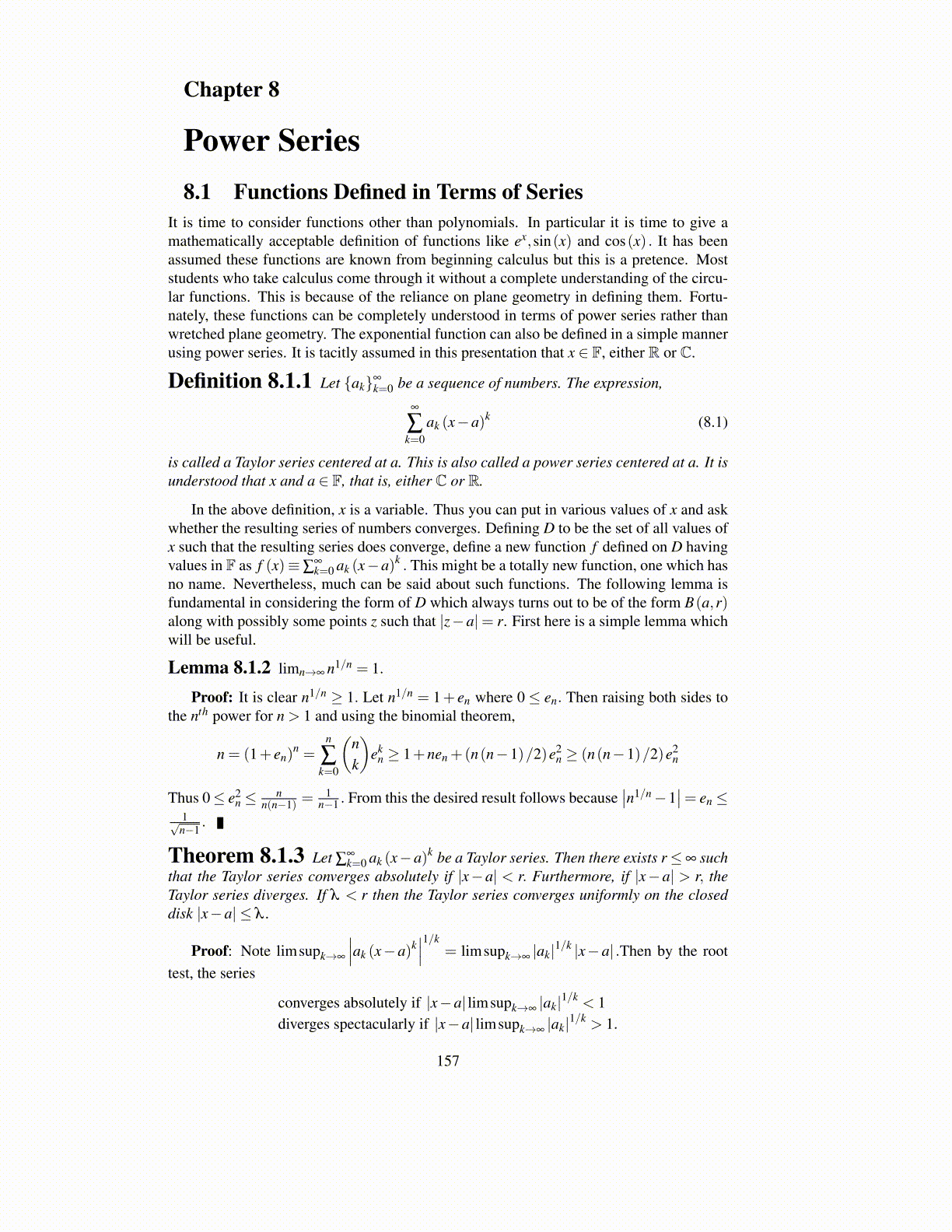
8.2. OPERATIONS ON POWER SERIES 157
8.2 Operations on Power SeriesIt is desirable to be able to differentiate and multiply power series. Recall
f ′ (x)≡ limh→0
f (x+h)− f (x)h
Here h,x, f all can have values in C. The definition is the same. The following theoremsays you can differentiate power series in the most natural way on the disk of convergence,just as you would differentiate a polynomial. This theorem may seem obvious, but it is aserious mistake to think this. You usually cannot differentiate an infinite series whose termsare functions even if the functions are themselves polynomials. The following is specialand pertains to power series. It is another example of the interchange of two limits, in thiscase, the limit involved in taking the derivative and the limit of the sequence of finite sums.
When you formally differentiate a series term by term, the result is called the derivedseries.
Theorem 8.2.1 Let ∑∞n=0 an (x−a)n be a Taylor series having radius of convergence
R > 0 and let
f (x)≡∞
∑n=0
an (x−a)n (8.2)
for |x−a|< R. Then
f ′ (x) =∞
∑n=0
ann(x−a)n−1 =∞
∑n=1
ann(x−a)n−1 (8.3)
and this new differentiated power series, the derived series, has radius of convergenceequal to R. Also, f (x) given by the Taylor series is infinitely differentiable on the interiorof its disk of convergence.
Proof: First consider the claim that the derived series has radius of convergence equalto R. Let R̂ be the radius of convergence of the derived series. Then from Proposition4.10.13 and Lemma 8.1.2,
1R̂≡ lim sup
n→∞
|an|1/n n1/n = lim supn→∞
|an|1/n ≡ 1R,
and so R̂ = R. If limsupn→∞ |an|1/n = 0, then limsupn→∞ |an|1/n n1/n and in this case, theseries and derived series both have radius of convergence equal to ∞.
Now let r < R, the radius of convergence of both series, and suppose |x−a|< r. Let δ
be small enough that if |h|< δ , then
|x+h−a| ≤ |x−a|+ |h|< r
also. Thus, limsupk→∞ |ak|1/k r < 1.Then for |h|< δ , consider the difference quotient.
f (x+h)− f (x)h
=1h
∞
∑k=0
ak
((x+h−a)k− (x−a)k
)